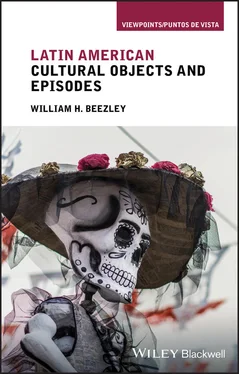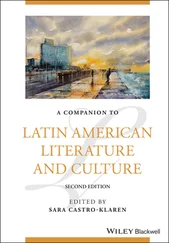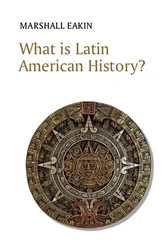”The prominence of the yell suggested using a button like a musical Hallmark greeting card in this prologue. Such a button proved to be prohibitively expensive for the book, but anyone can go to this link: https://www.mentalfloss.com/article/12328/disputed‐history‐tarzan‐yell to hear it 1or search videos of Tarzan’s yell in any search engine. Moreover, the objects in this book serve as yells, calling for action, celebration, or adventure expressed in episodes that are linked, however thinly, to the things in each chapter title.
1 1 Bill Demain, “The Disputed History of the Tarzan Yell” (August 22, 2012).
Introduction Res humanitatis , A Montage
Objects can make tangible the thoughts, activities, and performances that characterize the lives of everyday people. They also serve as expressive mementos of past events and expectant symbols of desired futures. Poets have said it differently: Only in the world of objects, even the least remarkable ones, do “we have time and space” (T. S. Eliot), so we “can find the entire cosmos” (Wisława Szymborska). Finding these worlds in objects such as potshards has fallen most systematically to archaeologists, but occasionally other investigators have adopted a similar methodology to chart cultures. Archaeologists, anthropologists, and art historians have examined religious relics, ritual regalia, and civic artifacts as well as craft industries, especially ceramics, weaving, and textiles in Latin America. Sam Roberts, in the New York Times , pointed to the marks that things – the wheel, the crucifix, the credit card or the computer chip – have made on civilization. Nevertheless, only a few authors have used an object from daily life, one perhaps overlooked and not necessarily handmade, to describe the larger histories it harbors or the episodes that it introduces. 1
Delight and surprise constitute the goals of this book. Delight comes from an appreciation of the imaginative and resourceful aspects of everyday lives that individuals develop in their homes and communities. Surprise comes from their efforts to make lives well lived despite daunting obstacles and haunting legacies of conquest, colonialism, nationalism, and inequalities of resources and authority. Things, that is, objects, provide lessons that make evident both these sentiments. These objects have obvious material properties, but serve as more significant cultural phenomena and point to episodes of everyday life. The different objects examined here each contain several general expressions. Only two of the objects as the subject of chapters deal specifically with visual media, but all of them in some way have been featured in movies, documentaries, television or all three. This, it seems to me, confirms their popular appeal to the general public. Moreover, all the objects are associated with music, another factor that accounts for their ubiquitous popularity. Popular or local religion can be identified as well; it appears obviously in three of the chapters, and more subtly in the others, but it occurs in each, providing a constant thread in Latin American culture and life.
For Latin America, the best example of studies based on objects must be Fernando Ortíz’s now classic investigation Contrapunteo cubano del tabaco y el azúcar ( Cuban Counterpoint: Tobacco and Sugar ), published in 1940, that examines the unique experience of Cubans, and captures their history and culture. In his study of tobacco and sugar, Ortíz explained how processes of “transculturation” shaped the meaning of those products through the impact of slavery during Cuba’s transition from colonialism to independence.
Beyond Ortíz, a few writers have taken objects as the organizing theme for their intriguing narratives to understand Latin American history after the arrival of the Spaniards and the Portuguese. Nearly as iconic as Ortíz is Sidney Mintz’s Sweetness and Power: The Place of Sugar in Modern History . Other books include Frederick Smith’s Caribbean Rum , Gregory Cushman’s Guano and the Opening of the Pacific World , and volumes on commodities such as bananas, cocaine, and coffee, and others concerned with clothing, cuisine, and identity. These publications for the most part provide an economic rather than a cultural analysis. An exception comes from Salman Rushdie’s The Jaguar Smile: A Nicaraguan Journey , with a chapter on “Sandino’s Hat.” 2
Outside Latin America, other publications have centered on objects to explore historical events. These include Neil MacGregor’s A History of the World in 100 Objects (2011), based on the British Broadcasting Corporation and the British Museum collaboration in a successful radio series called “A History of the World in 100 Objects.” The book has been reprinted in 10 languages, and, even more striking, its companion 15‐minute podcasts quickly topped 35 million hits and have continued to grow in number. These successes encouraged London’s Victoria and Albert Museum’s exhibit displaying 99 “disobedient objects” representing movements for social change over the past 30 years, including a “Silence = Death” poster created in response to the AIDS epidemic. Latin American objects in the exhibition included an arpillera (a collage made of scrap cloth) during the Chilean dictatorship demanding to know the fate of “disappeared” relatives and cloth dolls dressed with ski masks to represent the Zapatista Liberation Army (EZLN) insurgents in Chiapas, Mexico. 3
Beyond museum exhibits, a handful of authors have written thought‐provoking books on objects. Harold Holzer’s The Civil War in 50 Objects (2014) has been successful, as have books on individual items such as Henry Petroski’s The Pencil: A History of Design and Circumstance (2011), Mark Pendergrast’s Uncommon Grounds: The History of Coffee and How it Transformed Our World (1999), Mark Kurlansky’s Salt: A World History (2003), and others on cod (1998), oysters (2007), and other foods, Giles Milton, Nathaniel’s Nutmeg: Or, the True and Incredible Adventures of the Spice Trader Who Changed the Course of History (2000), and Sarah Bowen, Divided Spirits: Tequila, Mezcal, and the Politics of Production (2015). Another approach focuses on how certain objects define places such as the book by Sam Roberts, the New York Times urban affairs correspondent, entitled A History of New York in 101 Objects (2014).
Two other books take the study of United States material culture to the general reader by highlighting iconic objects – a fragment of Plymouth Rock, a presidential button, a soldier’s footlocker – and using them to brief readers on an historical event. Souvenir Nation by William L. Bird, Jr. and The Civil War in 50 Objects by Harold Holzer both offer fine essays and color illustrations meant for the armchair historian in all of us. It comes as no surprise that reading each of these books is like taking a stroll through a great museum – Holzer’s book focuses on the collection of the New‐York Historical Society, while Bird’s book examines the relics in the Smithsonian’s National Museum of American History.
The objects in this book explore in numerous ways what critic Gilbert Seldes called the Lively Arts, 4 and their emergence in hemispheric terms (or their transculturation) have shaped the cultures of Latin America in the modern era, that is the years after the end of Brazilian empire (1889) and the defeat of Spanish control of Cuba and Puerto Rico (1898). The objects and episodes make an effort to appeal to all the senses, touch, taste, sight, sound, and smell. They have resulted from serendipitous discovery of unusual and interesting items or they have come from the suggestions of friends. Some initial objects had to be put aside because of an effort to provide coverage of Latin America, and, in the end, this led to surprising (to me) choices that compelled new chapters. Ultimately, I chose the things that resulted in the following 10 chapters: each begins with an object acting as a synecdoche or metonym that provides an introduction. A stimulating and significant example of how metonymic narrative works is Cinderella in Spain 5 with its examination of the story’s motives. The metonyms in this volume I have, as Sam Roberts says, “inflated” in order to consider as a cultural topic or to introduce a cultural episode with international dimensions.
Читать дальше












